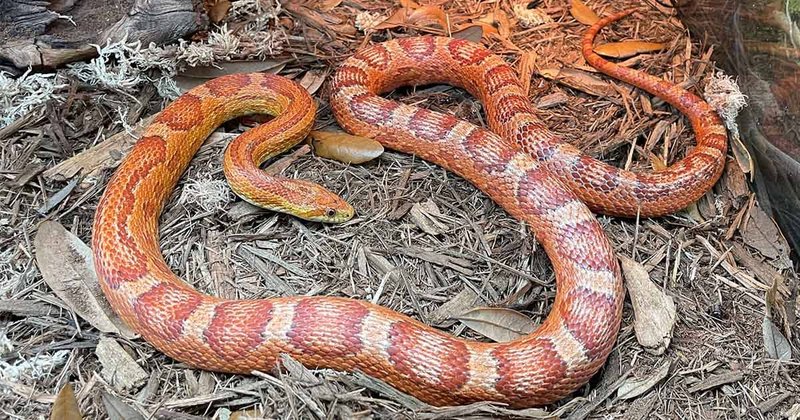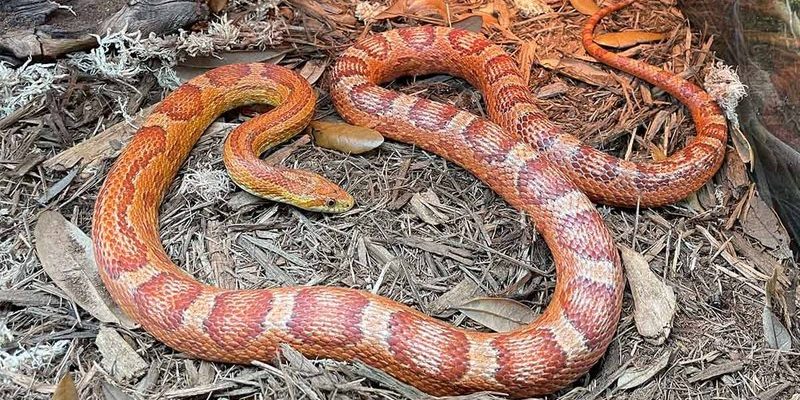
Imagine owning a pet that could be part of your life for over a decade! Sounds appealing, right? Let’s dive into the lifespan of corn snakes and explore what factors can influence their longevity. Whether you’re eyeing a hatchling or already have a corn snake curled up in its habitat, understanding how long these creatures live can help you ensure they’re comfortable and thriving.
The Average Lifespan of Corn Snakes
When we talk about the average lifespan of corn snakes, we often find ourselves around 15 to 20 years. That’s a significant commitment! In the wild, these snakes might only live about 6 to 8 years, but in captivity, with proper care, they can easily surpass that.
Many corn snakes live well into their teenage years, sometimes reaching their twenties! Imagine sharing your home with a snake that outlives many pets. Factors like diet, habitat, and healthcare play a big role in how long your corn snake will be around. If you provide the right setup and keep an eye on their health, you could enjoy years of companionship.
Factors Affecting Lifespan
So, what can actually influence how long your corn snake lives? Let’s break down a few crucial factors:
- Diet: Feeding your corn snake a well-balanced diet is vital. They thrive on a diet of rodents, such as mice and small rats. A poor diet can lead to health issues that affect their lifespan.
- Habitat: The environment you create matters! A clean, comfortable habitat with the right temperature and humidity can keep your snake healthy. Remember, happy snakes are long-lived snakes!
- Healthcare: Regular check-ups with a vet who specializes in reptiles can help catch any potential health issues early. Preventive care makes a significant difference.
Here’s the thing: if you combine all these elements, you’re setting up your corn snake for a long, healthy life. Think of it like growing a plant; with sunlight, water, and care, it flourishes. Your snake needs similar attention!
Common Health Issues
Just like any pet, corn snakes can face health problems that might affect their lifespan. Some common issues include:
- Respiratory infections: These can happen if the living environment is too cold or humid. Signs include wheezing or mucus around the nostrils.
- Parasites: These little invaders can cause digestive problems. Regular fecal exams can help catch them early.
- Obesity: This is often due to overfeeding. If your snake isn’t moving around much, it might lead to serious health concerns.
Being aware of these common issues empowers you to keep an eye on your corn snake’s health. You might be wondering how to spot these problems, and that comes with observation. If you notice anything unusual, consulting with a vet can help you address it quickly.
Creating a Long-Lived Home for Your Corn Snake
You might be curious about how to set up the perfect habitat for your corn snake to maximize its lifespan. Here are some tips:
1. Temperature control: Corn snakes enjoy a temperature gradient in their enclosure— warmer on one side and cooler on the other. The warm side should be around 80-85°F, while the cooler side can be 70-75°F. This helps them regulate their body heat effectively.
2. Humidity levels: Aim for humidity levels between 40-60%. Too much humidity can lead to respiratory issues, while too little can cause shedding problems. You can mist the enclosure or use a humidity gauge to keep track.
3. Enrichment: Provide plenty of hiding spots, climbing structures, and a water dish. An enriched environment helps keep your corn snake active and healthy. It’s like a mini jungle for your little friend!
Think of creating their home as setting up a cozy living room for a friend—comfortable and inviting, so they feel right at home.
Diet and Nutrition for Longevity
Feeding your corn snake a balanced diet is essential for a long life. Here’s how to do it:
– Choose the right prey: Corn snakes typically feast on mice, but as they grow, they might require larger prey like rats. Feed them appropriately sized meals—about the width of the snake’s body.
– Frequency matters: Young corn snakes usually eat once a week, while adults might eat every 10-14 days. Adjust feeding schedules based on their age and size.
– Monitor weight: Keep an eye on their body condition. If they seem too skinny or overweight, it might be time to adjust the feeding routine. A healthy corn snake has a defined shape without being too bony or excessive.
Providing the right nutrition is like giving your corn snake a solid foundation of health. Just like humans, a good diet can lead to a longer and healthier life!
Socialization and Handling
Corn snakes are generally friendly and can become well-socialized with gentle handling. Here are some handling tips:
– Start slow: When you first bring your corn snake home, give it a few days to adjust. Once you start handling them, do it gently.
– Building trust: Regular, gentle handling helps your snake become comfortable with you. It’s a bit like making a new friend—trust builds over time!
– Watch for stress signs: If your snake gets defensive or tries to bite, it might mean it’s stressed. Give it space and allow it to explore on its own terms.
Just like any friendship, open communication and respect help build a great bond. This can also enhance your corn snake’s quality of life, leading to a longer lifespan.
Corn snakes can be wonderful companions, often living for 15 to 20 years with the right care. By focusing on diet, habitat, healthcare, and socialization, you can contribute to their well-being and longevity. Just like any relationship, your time and attention can make all the difference.
If you’re thinking about getting a corn snake or already have one, remember that your care will directly impact their lifespan. So, buckle up for this journey together—there’s a lot of joy ahead with your slithery friend!

